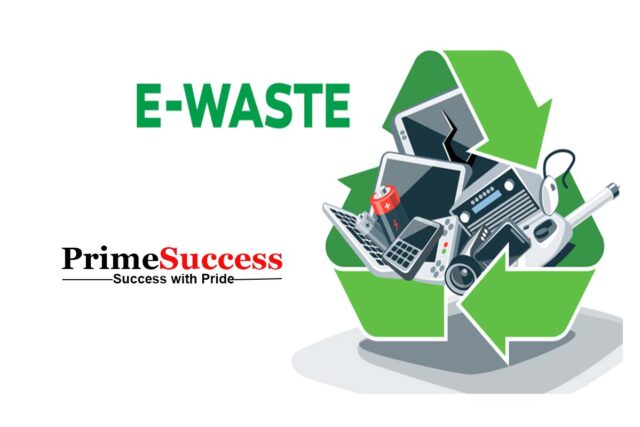WHAT IS E – WASTE?
E waste is otherwise known as electronic waste. We tend to live in a flood of technology like cell phones, computers, television, etc., and many more have become a part of our daily lives. However, these devices become wasted if they stop their operations and can pose a great risk to humans, animals and the environment as they are improperly disposed of.
Many of us might not know the danger posed by electronic devices that we throw away as a waste.
E-WASTE POLLUTION
These electronic devices are made up of toxic substances including polyvinyl chloride, mercury, lead, chromium, beryllium, cadmium, gallium arsenide, which can be harmful to man, animal and the environment. These chemicals end up being exposed to the environment through air, water, soil and causing harm to the human body.
HOW DOES E-WASTE AFFECT THE ENVIRONMENT.
For example, when replacing a TV with an old TV from the store, we might think that the store sends the old TV to the factory and that they will recycle the old product. But, that doesn’t happen every time these plants burn parts to get metals like copper, gold instead of recycling…
During this process these devices release harmful gases such as hydrocarbons, brominated dioxins into the air, which are clearly absorbed by humans and various animals. Not only do these particles pollute the air, they also have the property of penetrating into the soil and harming the biological process of plants, which are absorbed as food by animals and even end up in our plates. It does not end after air and soil go forward and mix with water, which reduces its quality, which is consumed by animals and humans through tap water.
HOW TO CONTROL E-WASTE POLLUTION?
- Avoid throwing away broken and outdated Electronic devices. Instead, transfer them to someone who can make the most of it.
- Take them to a recyclable manufacturer.
- Create awareness among people about e-waste. Teach them about the proper disposal of e-waste in schools, colleges and workplaces.
- Follow the 3R method in simple ways. Reducing, reusing and recycling.
HOW CAN INDUSTRIES MANAGE E-WASTE?
E waste management in factories should be started at its production stage itself. This can be done through waste reduction techniques and standard product design. Waste reduction in industries can be carried out as follows
- Inventory Management
Proper control of the materials used in the manufacturing process is important by reducing the quality of hazardous materials and the amount of excess raw material in stock will reduce the amount of waste produced. Make sure that only the required amount of ingredients are ordered.
- Change in the production process
Changes can be made in the production process, which will reduce waste production. Hazardous substances can be replaced by less dangerous or non-hazardous substances. Replacing the most effective process equipment or existing equipment will significantly reduce waste production.
- Volume Reduction
Size reduction involves techniques for removing hazardous parts of waste from a non-harmful area.
- Recovery and reuse
This technique can eliminate the costs of disposing of waste, reduce raw material costs and generate income from salt-rich waste.
RESPONSIBILITY OF AN INDIVIDUAL IN E- WASTE MANAGEMENT.
Recycling raw materials from the end of electronics life is the most effective solution to reduce e-waste.
E – Waste should never be removed along with debris or other household waste, they should be segregated and to be reused for the benefit of society for an alternative solution.
Collect the e-waste and find the company’s recycling center, where you can take those equipment for recycling.
“As human beings, we tend to generate about 40 million tons of e-waste globally every year,” says a study. This means that 800 laptops per second are disposed of.
And one report shows that 100% of all E waste is effectively recyclable, but only 12.5% of what you will notice is currently recycled. Be responsible for e-waste.










